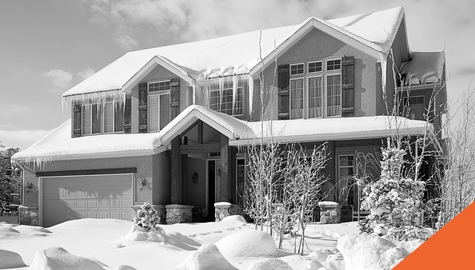Highway Driving Tips Canada
Friday, 22 July 2022
Driving up to your favourite vacation spot? Visiting family in another province? Running some errands in a big city nearby? You might be using one of Canada’s highways to get there!
In this guide, we'll go over highway driving tips so that you can keep yourself safe while navigating Canadian roads. Whether you're newer to Canada or have been driving here for years, take a few minutes to familiarize yourself with these tips for highway driving.
Highway Driving Tip #1: Always Be Alert
The first of our highway driving tips is to be alert and aware of your surroundings; it’s the most important thing you can do to stay safe. This includes being aware of other drivers, traffic, weather conditions, and changing road conditions. Don’t forget that many highway collisions occur in broad daylight, so be vigilant even when it seems like easy driving.
Highway Driving Tips #2: Drive in the Correct Lane
One of the most important highway driving tips is to always be in the correct lane for your speed and flow of traffic. The far-left lane is really only meant for passing slower-moving vehicles, not driving at a consistent speed. After you pass a slower vehicle, switch back to the right lane as soon as possible so that emergency vehicles and faster drivers can pass. It’s also common courtesy to move over one lane when you see an oncoming car merging onto a highway. Got two or more occupants in your vehicle (including children)? Feel free to use the High Occupancy Vehicle (HOV) lanes! Just don’t do it if you’re a solo driver; you put yourself at risk of a traffic ticket and hefty fines if you drive in the HOV lane.
The Best Highway Driving Tips #3: Follow All Traffic Laws
This highway driving tip might seem obvious, but new and experienced drivers all need reminders to be familiar with your province's traffic laws. Even if you've been driving for years in another country, it's important to familiarize yourself with the rules of the road in Canada. By knowing what is and isn't allowed, you can avoid tickets and accidents caused by ignorance or carelessness. Being a good driver will also help keep your insurance cost down.
#4 Highway Driving Tip: Maintain a Safe Speed & Distance
Provincial governments set the maximum speed limit on highways based on engineering and safety criteria. In Ontario, most highways have a speed limit of 100km/h, though some sections are 110km/h. Generally, speeds up to 120km/h are tolerated on highways – it’s okay to follow the flow of traffic. If you are not comfortable with driving at faster speeds, consider a different route. Slower, tentative drivers can be ticketed for going too slow, and low speeds could cause a car accident.
When moving at higher speeds, it’s recommended to maintain at least three seconds between you and the car in front of you. This will give you more time to react to the unexpected such as sudden braking, a nearby car accident, or swerving to avoid hitting a deer with your car.
The Best Highway Driving Tips #5: Use Your Signals
Use your turn signals to inform other drivers of what you are doing. This is especially important when you're making a lane change or merging onto the highway. Use your signal before changing lanes or merging onto the highway so that other drivers can anticipate your intentions.
Highway Driving Tips #6: Be Familiar with Signage
While there are many similarities, each province has its own set of road signs that are important to know as you drive on the highway. Familiarize yourself with the signs of your province here:
Ontario Road Signs
Alberta Road Signs
New Brunswick Road Signs
Nova Scotia Road Signs
Final Highway Driving Tips: Getting on and off the Highway Safely
Entering the Highway
Follow these steps to safely merge onto the highway:
- Take the entrance ramp to get up to speed and prepare for entering traffic.
- As you approach the acceleration lane, signal your intention to merge with your blinker.
- Avoid merging sharply – use the full acceleration lane to gain speed before moving over; it’s your job to match the flow of traffic before merging.
- During acceleration, monitor traffic using your mirrors.
- Check your blind spots before moving over into the next lane.
Safely Exiting the Highway
Do you know how to carefully leave a highway? Review these highway driving tips below.
- Be alert, looking for signs of your upcoming exit.
- Put on your signal and move into the deceleration lane that opens near the exit.
- Reduce your speed as you enter the off-ramp.
- Be prepared to come to a complete stop at a stop sign, traffic light, or traffic circle at the end of the off-ramp.
- If you miss your exit (don’t worry, we’ve all done it!) – NEVER STOP OR DRIVE IN REVERSE ON THE HIGHWAY! Instead, take the next exit and your GPS will help you navigate to your destination.
Who Can Drive on the Highway? Rules & Restrictions
Ontario specifically has some restrictions for highway driving. You must have a G2 or G license to drive on the 400 series highways. The only time that G1 drivers may use the 400 series highways is with a licensed driving instructor. In Alberta, New Brunswick, and Nova Scotia there are no such highway restrictions for Graduated License Drivers.
With these highway driving tips, you’ll be able to drive on Canadian roads safely and comfortably. Learn more about general Safe Driving Tips on our blog. At Billyard Insurance Group, we love rewarding safe and smart drivers with discounted insurance rates. Learn about our Telematics program that could save you up to 30% on your insurance. Contact us now for a free car insurance quote and start saving!
Author: Amy Legault



